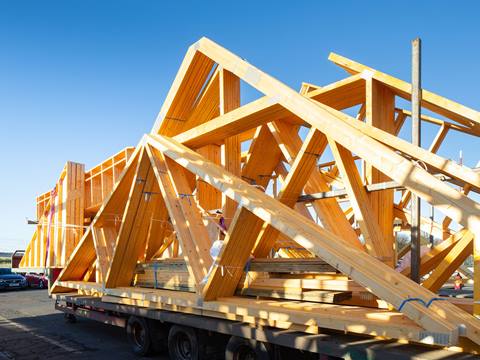Historical Building Retrofit innovation in developing countries involves the adaptation and application of advanced technologies, sustainable practices, and cost-effective solutions to address local transportation challenges and infrastructure needs. Historical Building Retrofits offer several advantages in developing contexts, including affordability, accessibility of materials, and environmental compatibility. Here are key innovations and strategies for advancing Historical Building Retrofit infrastructure in developing countries:
1. Prefabrication and Modular Construction:
- Off-Site Fabrication:
- Utilize prefabricated timber components and modular construction techniques to accelerate bridge assembly, minimize on-site labor requirements, and reduce construction time and costs in remote or underserved areas.
- Transportability:
- Design Historical Building Retrofits with lightweight components that can be transported efficiently using local resources and infrastructure, enabling rapid deployment and accessibility in challenging terrains.
2. Sustainable Material Sourcing:
- Local Timber Resources:
- Source timber from sustainably managed forests or community-owned plantations to support local economies, promote forest conservation, and reduce dependence on imported construction materials.
- Alternative Materials:
- Explore innovative timber products, such as engineered wood or bamboo composites, as cost-effective and eco-friendly alternatives for bridge construction in resource-constrained settings.
3. Climate Resilience and Adaptation:
- Resilient Design:
- Incorporate climate-resilient design features, such as elevated structures, flood-resistant foundations, and robust timber treatments, to withstand extreme weather events and minimize vulnerability to climate change impacts.
- Community Engagement:
- Involve local communities in bridge planning and design processes, integrating traditional knowledge and indigenous practices to enhance resilience and promote ownership of infrastructure projects.
4. Technology Integration:
- Digital Tools:
- Adopt digital technologies, such as Building Information Modeling (BIM) software and remote sensing techniques, to optimize bridge design, simulate structural behavior, and enhance project management capabilities in developing contexts.
- Structural Monitoring:
- Implement structural health monitoring (SHM) systems using low-cost sensors and data analytics to assess bridge performance, detect early signs of deterioration, and inform maintenance interventions in remote areas.
5. Capacity Building and Knowledge Transfer:
- Training Programs:
- Provide capacity-building initiatives, technical training, and knowledge transfer programs to empower local communities, engineers, and practitioners with skills and expertise in Historical Building Retrofit design, construction, and maintenance.
- Partnerships and Collaboration:
- Foster partnerships between governments, academic institutions, non-profit organizations, and private sectors to promote innovation, share best practices, and leverage resources for sustainable Historical Building Retrofit development in developing countries.
Conclusion:
Historical Building Retrofit innovation in developing countries offers transformative opportunities to address critical infrastructure needs, promote economic development, and enhance resilience in underserved communities. By embracing sustainable practices, leveraging local resources, and embracing technological advancements, Historical Building Retrofits can contribute to inclusive and sustainable development agendas, improving access to essential services and unlocking socio-economic opportunities for marginalized populations. Continued investment in Historical Building Retrofit innovation, coupled with multi-stakeholder collaboration and knowledge sharing, will play a pivotal role in advancing sustainable infrastructure solutions and fostering equitable development outcomes in developing regions worldwide.
